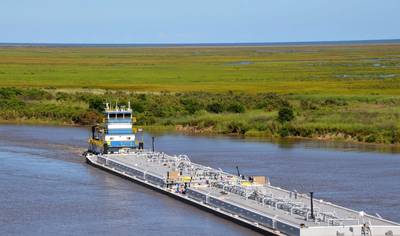July 20 marks a milestone in Subchapter M implementation.
Towing vessels with keels laid or major conversions on or after July 20, 2017 are required to meet 46 CFR Subchapter M and obtain a Certificate of Inspection (COI) prior to operating.
Additionally, starting July 20, 2018, a portion of existing towing vessels will have one year to meet all of Subchapter M and obtain COIs. As discussed in Subchapter M, owners or managing operators of more than one existing towing vessel required to have a COI must ensure that each existing towing vessel under their ownership or control is issued a valid COI according to the following schedule:
- By July 22, 2019, at least 25 percent of the towing vessels must have valid COIs on board;
- By July 20, 2020, at least 50 percent of the towing vessels must have valid COIs on board;
- By July 19, 2021, at least 75 percent of the towing vessels must have valid COIs on board; and
- By July 19, 2022, 100 percent of the towing vessels must have valid COIs on board.
Owners or managing operators of only one existing towing vessel required to have a COI must ensure the vessel has a valid COI by July 20, 2020.
While July 20, 2017 signifies the entry into force of a portion of Subchapter M, some regulations are already in effect. As of July 20, 2016, an existing towing vessel must already comply with watertight or weather tight requirements. Vessel owners and operators should also be aware that towing vessels must meet other applicable requirements in Title 46, Code of Federal Regulations, Part 144 no later than either July 20, 2018 or the date the vessel obtains a Certificate of Inspection (COI), whichever date is earlier.
With approximately one year to go before a significant portion of towing vessels start to obtain a COI, owners and managing operators are encouraged to develop a plan to ensure their vessel(s) are in compliance and allow adequate time for the Coast Guard or a Third Party Organization to complete the required inspections, audits, and surveys necessary prior to the issuance of a COI. Recent policy the Coast Guard has issued includes:
- CG-CVC Policy Letter 17-01: Use Of The Uninspected Towing Vessel (UTV) Decal To Meet Certain Requirements Regarding Issuance Of The Initial COI Under Subchapter M;
- CG-CVC Policy Letter 17-02: Use Of Existing Safety Management Systems To Obtain An Initial Certificate Of Inspection Under 46 CFR Subchapter M; and
- CG-CVC Policy Letter 17-03: Certification Of Inspection (COI) Phase-In Period For Existing Towing Vessels Using The TSMS Option Under Title 46, Code Of Federal Regulations (CFR) Subchapter M
Additional policy letters that are forthcoming include a TPO Guidebook, Towing Safety Management System Guidebook, and a Compliance Guidebook.
As guidance and policies related to Subchapter M continue to be developed, companies must make the important decision to employ either the Coast Guard option or the Towing Safety Management System (TSMS) option. Using a third party to conduct surveys and audits is a paradigm shift from traditional Coast Guard inspections. However, the TSMS option may provide greater flexibility to companies in scheduling and performing surveys and audits, while also establishing a comprehensive quality control system that will increase the safety and efficiency of all towing vessel operations.
If stakeholders have additional questions or concerns that are not clearly explained in the preamble or regulatory text of Subchapter M, we encourage you to
submit questions via the TVNCOE website or attend the Towing Safety Advisory Committee meetings. Towing companies, whether American Waterways Operators (AWO) members or not, are urged to consult
AWO’s Subchapter M website.
The Author
Scott Kuhaneck, U.S. Coast Guard Domestic Compliance Division, Office of Commercial Vessel Compliance
This post appears courtesy of the Coast Guard Maritime Commons blog and is not a replacement or substitute for the formal posting of regulations and updates or existing processes for receiving formal feedback of the same. Links provided on this blog will direct the reader to official source documents, such as the Federal Register, Homeport and the Code of Federal Regulations. These documents remain the official source for regulatory information published by the Coast Guard.














